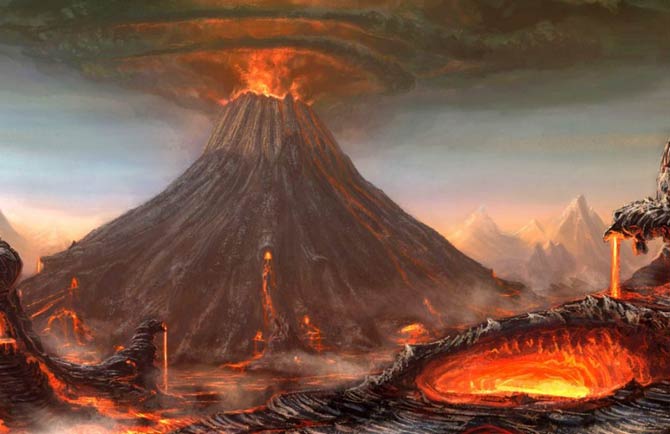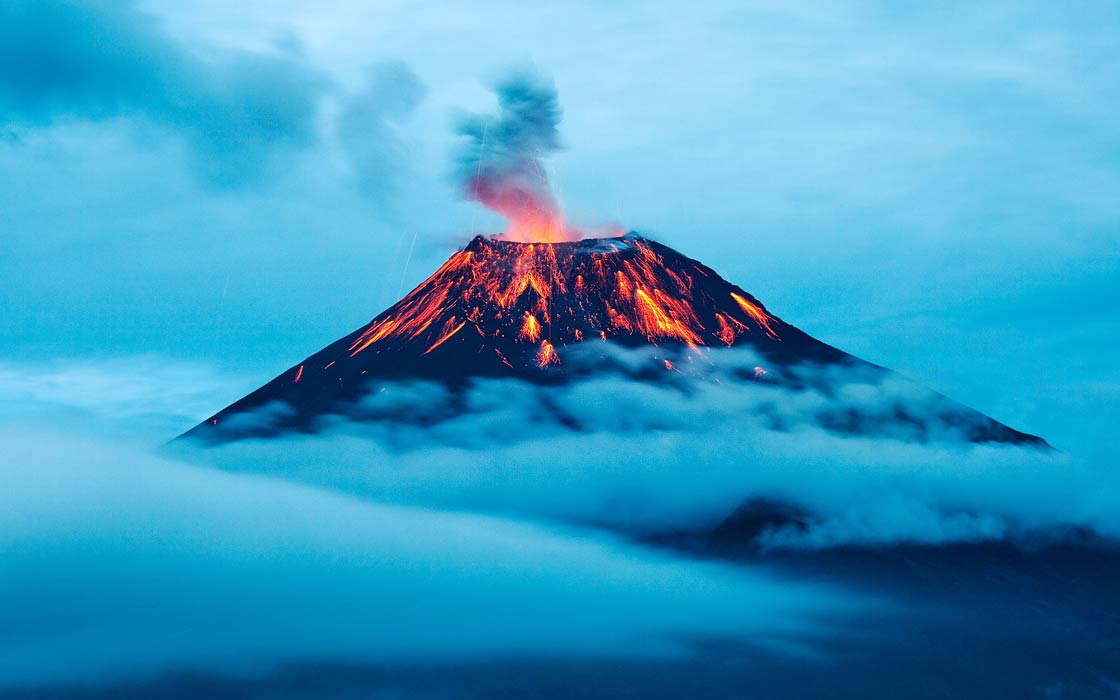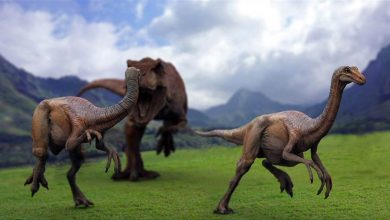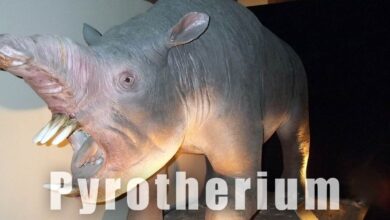The eruption of the Tambora volcano in 1815
The largest eruption in recorded human history
The eruption of the Tambora volcano, which took place in April 1815, is generally considered to be the most powerful eruption in historical times (in recorded human history), i.e. those from which written sources have survived. However, scholars believe that there has not been a major eruption in at least 12,000 years.
Tambora ( Tomboro) volcano is located on Sumbawa Island, which is now part of Indonesia. Interestingly, its eruption, although the strongest in the history of modern man, is not as known as, for example, Krakatau. This is due to the fact that it took place at a time when modern methods of transmitting information, such as the telegraph, did not yet exist. News of the cataclysm reached Europe with a long delay and climate change has not yet been linked to volcanoes. This was one of the reasons, why the connection of the outbreak with a later period, called the year without summer, was not noticed until the second half of the 20th century.
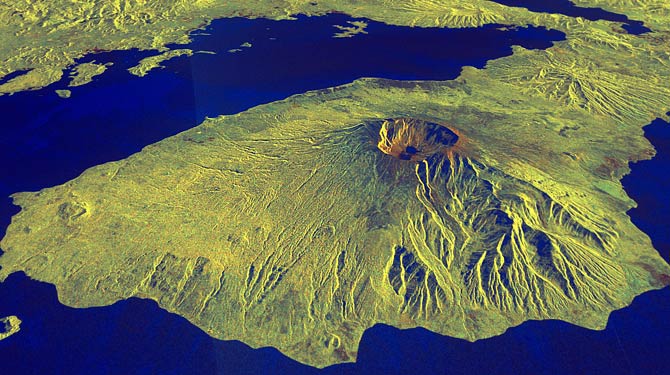
Tambora before the eruption
Sumbawa was part of the Dutch East Indies in the 19th century. It did not stand out with anything special – except for the huge, over 4,200 m high Tambora mountain, named after the people inhabiting this land. They cultivated sandalwood from which incense and medicine were made. Moreover, they were known for breeding horses and delicious honey. Compared to many other peoples inhabiting the islands of that part of the world, it was a very rich, highly developed community, which benefited from contacts with Europeans.
The presence of the volcano on the island did not bother anyone – it is even assumed that the mountain was not considered a volcano at that time. It is true that in 1812 small clouds of ash were observed coming out of the top. Today, scholars would have no doubts that this was a harbinger of an eruption, but then practically nobody was worried about this fact. One man noticed this – the governor of the island of Java, Sir Thomas Stanford Raffles, who described this phenomenon in his notebook. It is mainly thanks to his notes that we know what happened next.
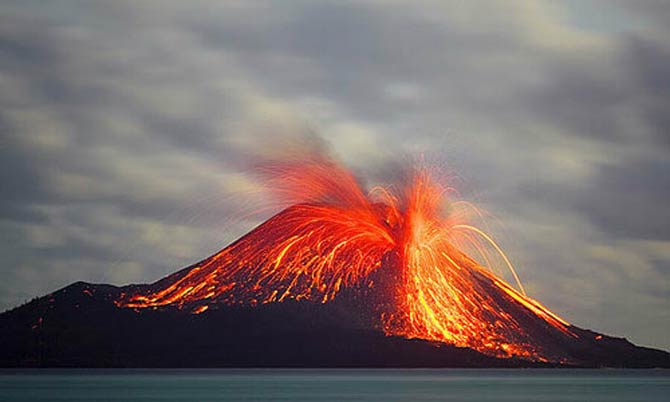
1815 eruption of Mount Tambora
On the evening of April 5, 1815, a huge explosion lasting almost two hours took place. Raffles, while in Java, 900 km away, considered that this sounded like a distant cannonade. There was even a misunderstanding – an alert was issued in the Javanese military garrison as it was considered, that a naval battle must have taken place nearby and two patrol boats were dispatched to check what was happening.
The next day, however, no one doubted what really happened. The 33 km high column of smoke indicated that the volcano on Sumbawa Island was active. This alarmed the Englishmen living in Java, who tried to figure out a way to prepare for the worst, but it was too late. On April 10, an even stronger explosion (eruption) took place, which lasted as long as 3 hours. This time the pillar of smoke was 44 km high.
British observers sent to Sumbawa looked anxiously at the columns of fire coming out of the mountain. As a result of the cataclysm, lava began to flow from the summit, and pyroclastic material (ash and pieces of rock) caused avalanches that reached speeds of up to 150 km/h. The slopes of the mountain were set on fire, and the people living at its foot had no chance of being saved. In this way, the Tambora people of over 10,000 people were completely exterminated. They were to be completely forgotten for the next decades.

The effects of the disaster
The sounds of the Tambora eruption were heard from a distance of up to 2600 km – this is the distance from Trumon (a city in Sumatra) to the volcano. In the waters several hundred kilometers from Sumbawa, navigation has become impossible due to the constant ash falling from the sky. It was not until the afternoon of April 12 that the sun’s rays broke through the thick clouds for the first time and the ships could move.
The flow of pyroclastic material into the ocean caused a powerful tsunami wave. In some places, it was 10 meters, and the average was 3-4 meters. It resulted in the death of several thousand more people.
Volcanic ash also caused great damage. It fell to the surrounding islands at a distance of up to 1,300 km. In Sumbawa itself, the ash layer was 1.5 m high, and even in distant Java, it was 1 cm thick. The ash contaminated drinking water sources, leading to epidemics of diarrhea on several islands. The mineral debris fell on the plants and was eaten by the animals, which dying of internal bleeding. It is estimated that the total number of victims of the eruption (due to the eruption itself, tsunami, starvation and disease) could reach 71,000. This is what the Far East had to endure right after the eruption. Other parts of the world were yet to learn about the power of the blast.

1816 – a year without summer
The eruption of the Tambora volcano released probably as much as 100 km3 of ash into the atmosphere. Some of this amount fell, but the tiniest fractions remained in the air for a long time, spreading through the atmosphere, mainly in the northern hemisphere. Volcanic ash favored the formation of clouds, which on the one hand resulted in cooling, and on the other – increased precipitation.
Even in the summer of 1815, the inhabitants of America and Western European countries could observe the red glow at sunset. In spring and summer, the sun took an unusual color even during the day, and its light was so dim that it could be seen with the naked eye. In May 1816, the sowings were damaged by frost, and in June there was frequent snowfall. Two violent snowstorms swept across eastern North America – Quebec was nearly 30 cm of snow! Some rivers and lakes were still frozen in July.
Anomalies have also been noticed in southern and eastern European countries. There was also cooling down there (although not as strong as, for example, in North America). In the spring of 1816, unusual, brown snowfall was noticed in Hungary, while red snow fell in Italy – the color was undoubtedly due to volcanic ash. Violent storms have swept across Europe, giving rise to heavy rainfall and catastrophic floods.
This resulted in extremely poor yields. Famine began to spread in parts of the United States, Canada, and Western Europe. Whole families and even communities moved from place to place in search of food. There were numerous robberies as hungry and desperate people attacked food transports and warehouses. The lack of food led to numerous diseases – by 1819 a wave of typhus epidemics swept across many European countries. In addition, huge losses were suffered by livestock farmers, whose animals were dying of hunger in large numbers.
In China, low temperatures and torrential rains destroyed many rice crops, contributing to the greatest famine in the history of the country recorded to date.
The eruption of the Tambora volcano also had a big impact on culture. The wet and unpleasant summer of 1816 meant that Mary Shelley, who was on vacation near Geneva, made a bet with her friends about who would write a scarier novel for lack of a better job. The result of her work was the book “Frankenstein”, which later gained worldwide fame. In turn, the painter William Turner painted a series of paintings depicting unusual sunsets.
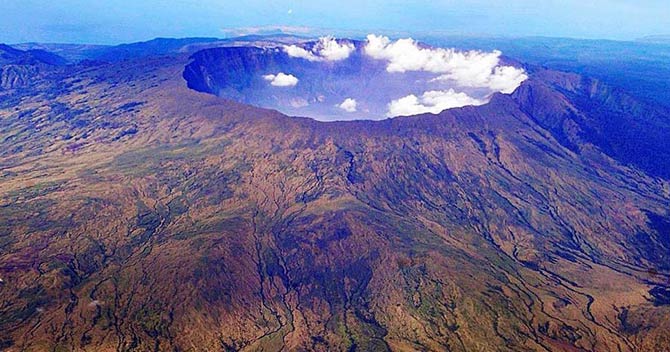
Tambora today
Currently, Tambora measures 2850 m above sea level. The release of a huge amount of magma caused the summit to collapse. Currently, the mountain is crowned with a crater with a diameter of 7 km and a depth of 1100 m. The lava dome located in it proves that the volcano is dormant, but in the near future it may explode again – chances that Tambora will explode within 50 years, are rated at 10%.
In 2006, Indonesian scientists with the support of American scientists conducted a series of ash studies on Sumbawa. Using radar, it was possible to examine the houses of the Tambora people covered with a three-meter layer of ash and pumice stone. It turned out that they produced an advanced civilization; they knew, among others the technique of making delicate porcelain.
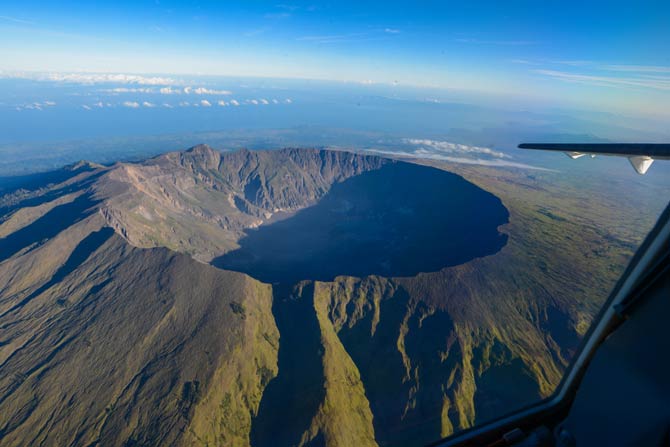
Detailed data
Tambora volcano eruption in numbers
- Date: April 6 and 10, 1815
- Amount of ash: up to 100 km3
- Number of victims from the eruption: at least 71,000
- Volcanic Explosivity Index (VEI): 7 (VEI of the eruption of Mount Vesuvius in 79 was 5)
- The eruption was heard on the island of Sumatra, more than 2,600 km (1,600 mi) away
- The height of Mount Tambora has been reduced from approximately 4,300 meters (14,100 ft) to 2,851 meters (9,354 ft)
- The tsunami wave reached 10 meters
- An over-pressurization of the chamber of about 4,000–5,000 bar (400–500 MPa (58,000–73,000 psi) was generated, with the temperature ranging from 700–850 °C (1,292–1,562 °F)
- Earthquakes were felt, among others in the city of Surabaya, 500 km away
- There was no summer in Europe and North America in 1816
- In 1815, the average temperatures decreased from 0.4 to 0.7 °C (0.7 to 1.3 °F)
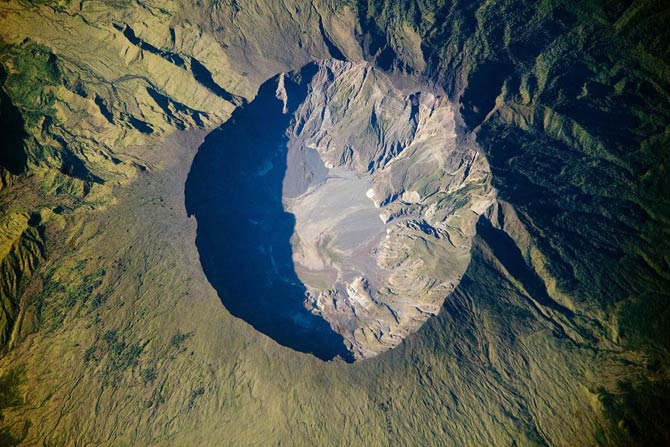
Tambora volcano – interesting facts
- In The Old Farmer’s Almanac, published in the USA since 1792, there was a mistake in the 1816 edition – the weather forecast for December was also included in June. By coincidence, the forecast turned out to be accurate, thanks to which the magazine gained a reputation of being infallible.
- As a result of the lack of food, horses died en masse in 1816, so the German inventor Karl Drais began working on a means of individual transport that was to replace these animals. This is how the velocipede was created, i.e. the ancestor of the bicycle.
- The ash-covered remains of the products of the Tambora civilization are called the “Pompeii of the East”.
